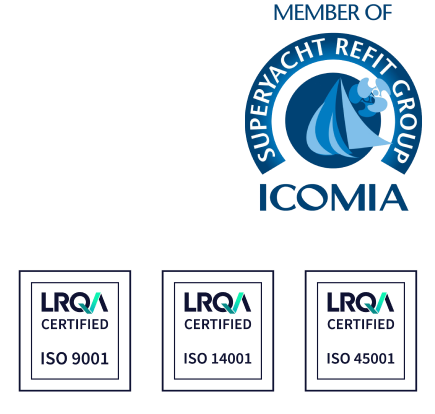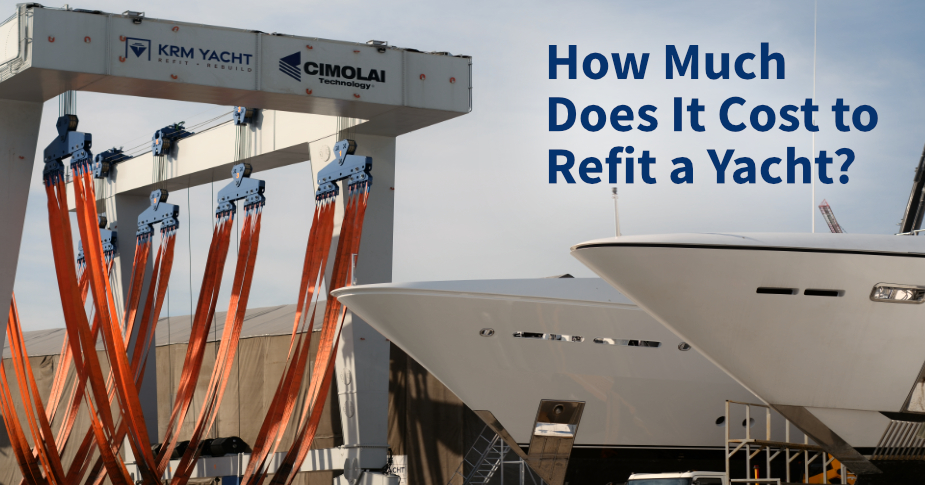A yacht refit is more than just an upgrade it’s a strategic investment that impacts safety, performance, compliance, and long-term asset value. Whether you’re modernizing outdated systems, redesigning interiors, or preparing for commercial charter service, understanding the cost structure of a refit helps you plan efficiently and avoid unnecessary delays or overruns.
What is a Yacht Refit?
A yacht refit involves restoring, upgrading, or modernizing various parts of a vessel from cosmetic updates to full technical overhauls. Unlike routine maintenance, refits require careful planning, downtime, and coordination across multiple disciplines.
Why Yacht Owners Choose to Refit
-
Replacing aging propulsion, HVAC, or electrical systems
-
Upgrading interiors to modern luxury standards
-
Preparing the yacht for charter or commercial service
-
Extending the vessel’s lifecycle and resale value
Vessels often undergo significant refits after 10–15 years to remain competitive, safe, and attractive in today’s market.
What Influences the Cost of a Yacht Refit?
1. Vessel Size & System Complexity
Larger yachts typically have more advanced systems and materials requirements. The size of the vessel is a key driver of both labor and material costs.
2. Scope of Work
Refit projects vary widely depending on owner priorities. Common categories include:
-
Technical Systems: Main engines, generators, automation, HVAC
-
Structural Work: Hull modifications, steel/aluminum repairs, extensions
-
Interior Renovation: Furnishings, layout reconfiguration, lighting systems
-
Compliance Upgrades: Fire protection, safety gear, navigation equipment
-
Bridge & Navigation: Integrated bridge systems, communication refits
3. Shipyard Location & Labor Market
Where you refit your yacht plays a critical role in project cost and quality.
| Region | Key Characteristics |
|---|---|
| Turkey (e.g., Tuzla) | Full-spectrum technical capability, competitive labor costs, strong engineering base |
| Italy / France / Spain | Strong in design and interiors; generally mid-to-high cost |
| Germany / Netherlands | High-end engineering, excellent infrastructure; highest cost tier |
| USA | Regulatory familiarity, variable quality across yards |
What to Expect from the Refit Process
We’ve managed a wide range of projects for vessels between 20 and 65 meters. Our methodology emphasizes clarity, coordination, and quality at every phase.
Best Practices for a Successful Refit:
-
Detailed Technical Survey: Define true scope before committing
-
Clear Specifications: Avoid vague goals that increase change orders
-
Cross-Trade Project Management: Integrated teams minimize delays
-
Transparent Budgeting: Always include a 10–20% contingency
-
Early Compliance Review: Avoid issues with class or flag inspections
We believe in building refits on a foundation of transparency, foresight, and hands-on technical leadership, from dry dock to relaunch.
So, What Does a Yacht Refit Cost?
There’s no one-size-fits-all price tag, and that’s the truth. A refit depends on the size of your vessel, its technical condition, and your project vision. But with clear planning and the right team, you’ll avoid guesswork and gain full control over your investment.
If you’re ready to explore your options, our engineers are happy to assess your project and deliver a tailored plan often within 24 hours.
Start Your Refit Journey
Ready to bring your yacht to the next level?
Let’s talk. Our refit team in Tuzla, Istanbul is here to help with infrastructure, talent, and experience.
We’ll respond within 24 hours — confidentially, clearly, and without pressure.









